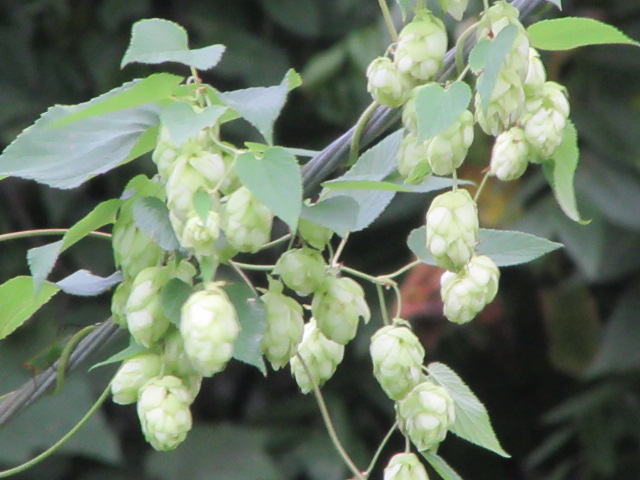
Humulus lupulus (Common Hops) on 9-2-22, #908-14.
Hello everyone I hope this post finds you all well and enjoying the cooler temperatures. I have been enjoying the cooler temps, but that means wildflower hunting for the year is coming to an end. I suppose that is OK for a while. That means I can update the plant pages and add new pages for what was discovered in 2022. I added 47 new species for 2022 to the list, 31 were wildflowers (including 4 ferns). I am still behind writing posts and it is getting a bit confusing. I try to write a page before I post about the species which isn’t working out so well…
This post is about what I found back on September 2 after 7 PM. The wind was blowing slightly, with little gusts when I would start to take a photo.
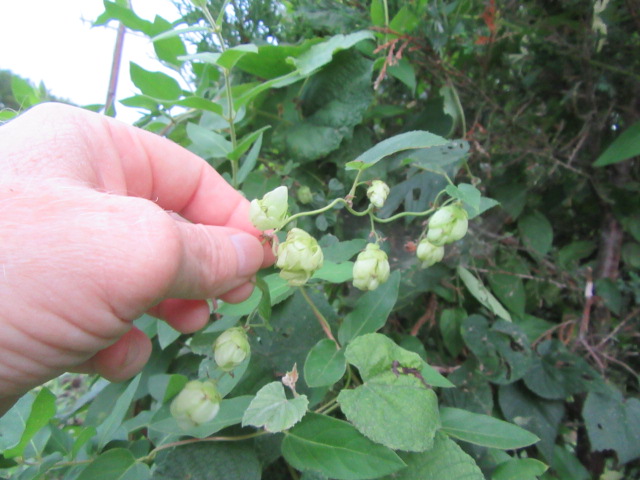
Humulus lupulus (Common Hops) on 9-2-22, #908-15.
On September 2, I set out toward the front pasture to check on the progress of the New England Aster (Symphyotrichum novae-angliae). They were still “working on it” as far as flowers are concerned even though the plants are taller than me. They are now blooming up a storm… GEEZ!
I walked around the back side of the old pond and as I approached the fence I noticed the hops vine had climbed up the guide wire of a utility pole. The funny thing was the Japanese Honeysuckle was right behind it. It may have give one the impression the hops fruit belonged to the vine below it. I took a photo but unfortunately it didn’t come out well. The next time I went back the hops had already turned brown.
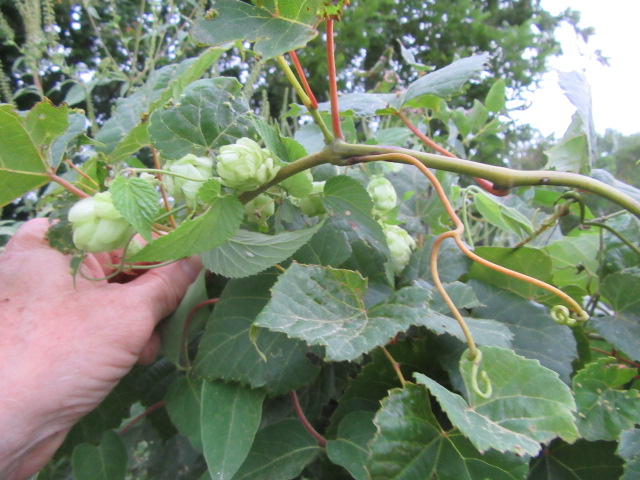
Humulus lupulus (Common Hops) on 9-2-22, #908-16.
The leaves of Humulus lupulus can be quite variable and always reminded me of a grape vine. In fact, I always thought the vines were grapes. I had checked a few websites before and they showed their leaves were more lobed. Well, this time I confirmed the grape vines were growing hops fruit! Imagine that! Maybe next year I can get to the fence and take photos of their weird flowers…
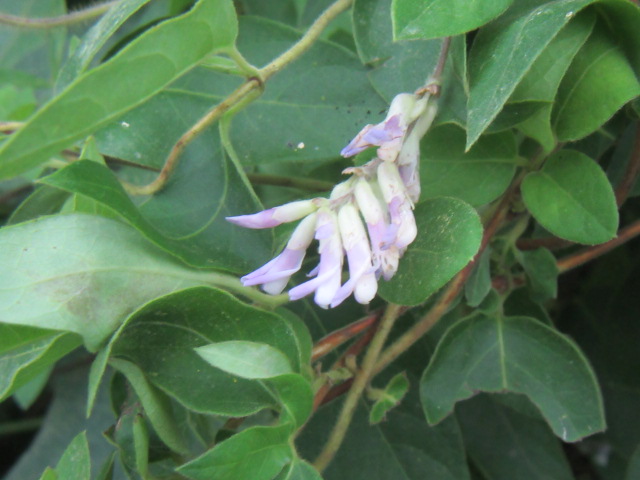
Amphicarpaea bracteata (American Hog Peanut) on 9-2-22, #908-1.
Then I found something that left me scratching my head… The Japanese Honeysuckle covers the fence, which is an understatement but this flower growing from the honeysuckle left me very confused. Well, I figured if the grape vines could grow hops the honeysuckle may as well do something weird as well.
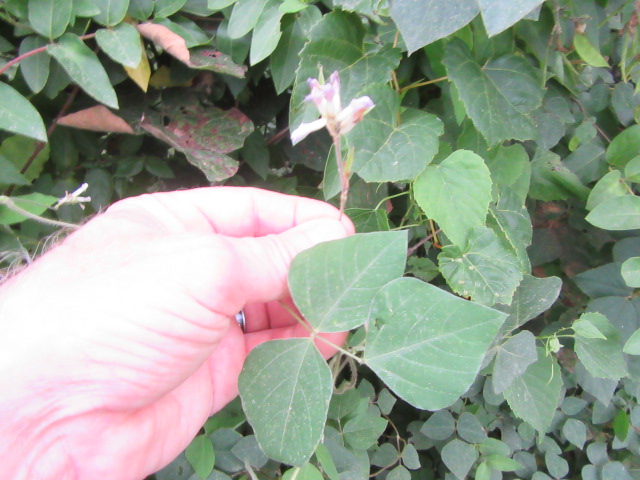
Amphicarpaea bracteata (American Hog Peanut) on 9-2-22, #908-2.
I dug around a bit and found bean leaves… As you can see in the above photo there were more along the ground (which I didn’t notice until I looked at the photo). I put the flower photo on iNaturalist and it said it was Amphicarpaea bracteata, commonly known as the Hog Peanut or American Hog Peanut… Hmmm…
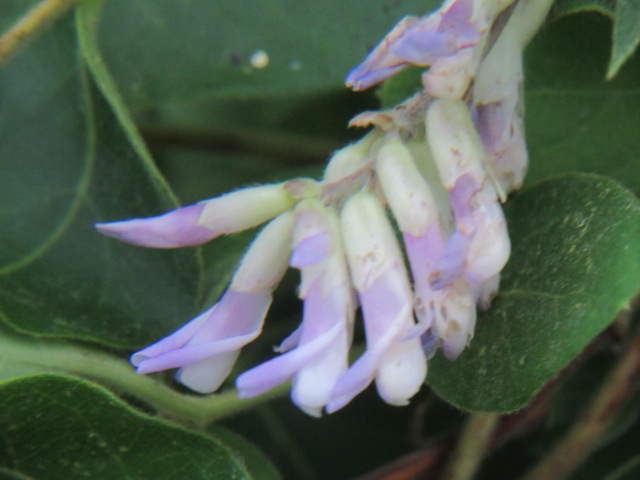
Amphicarpaea bracteata (American Hog Peanut on 9-2-22, #908-3.
I never saw anything like it. Those are definitely weird flowers!
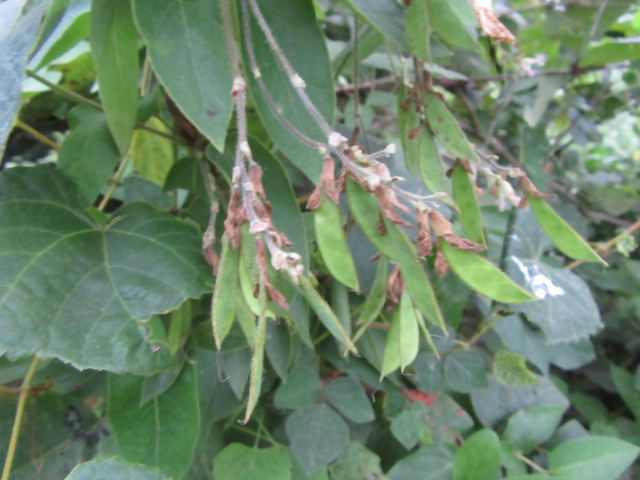
Amphicarpaea bracteata (American Hog Peanut) on 9-2-22, #908-4.
Then I found a few clusters of seed pods… Well, that got me to wondering why a bean was called a hog peanut? I did some reading and found out the genus name, Amphicarpaea, is Greek for “two-seeded,” referring to the two types of seeds: above and below ground. What? Apparently, there are two types of flowers that both produce different fruit and seeds. The upper flowers (on the vine) are “normal” (chasmogamous) that pollinate like most other flowers. The plant also produces vines, or stems, that spread on the ground that have cleistogamous flowers, which means fertilization occurs inside a permanently closed flower. These flowers are inconspicuous and have no petals…The fruit (seed pods) of the upper flowers contain 2-3 seeds, while those of the lower flowers only have one. What is even weirder, is that they burrow into the ground. Information I read on one site (Climbers by the University of Michigan) that E.J. Trapp’s description in the American Journal of Botany (1988) says “runners (ground level stems) are produced that search out dark crevices in the soil. If these are found, the plant produces an underground flower.” How weird is that?
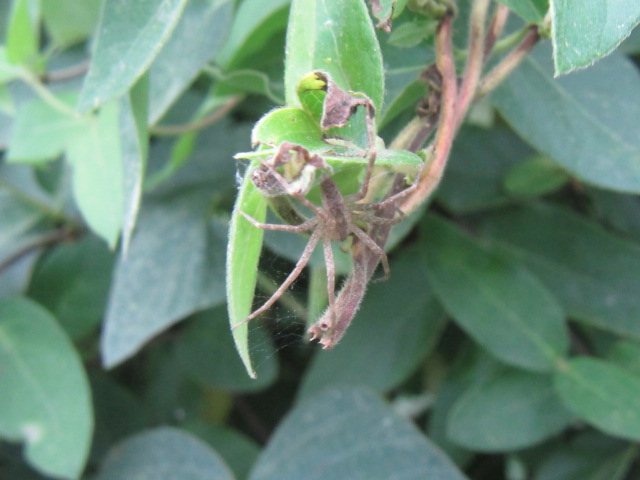
Pisaurina mira (American Nursery Web Spider) on 9-2-22, #908-28.
While looking around in the leaves, this Pisaurina mira (American Nursery Web Spider) ran for cover. She didn’t seem to appreciate me snooping around.
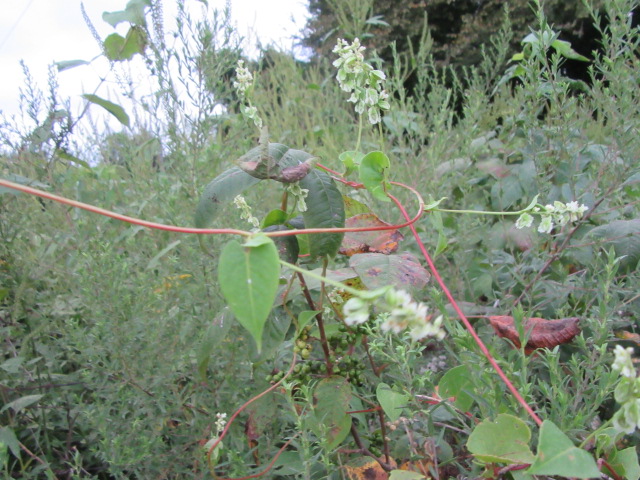
Fallopia scandens (Climbing False Buckwheat) on 10-2-22, #908-11.
Farther up the fence, since I am walking uphill toward the gate, I noticed another odd creature. What in the heck?!?! The wind was blowing a little, so getting a good photo was a little difficult. I had to have my trigger finger ready and must have took 20 photos!
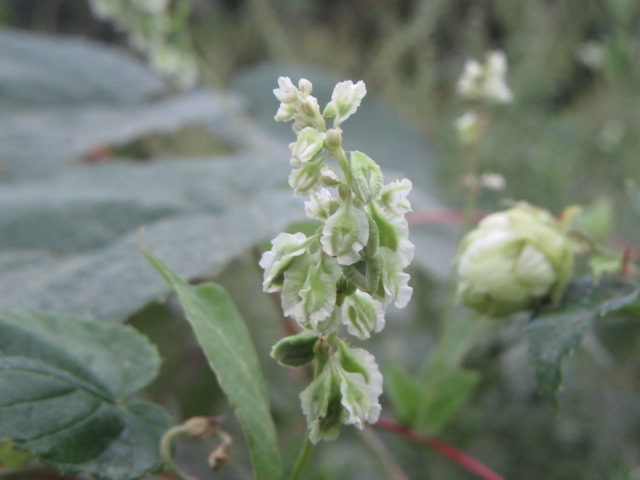
Fallopia scandens (Climbing False Buckwheat), 9-2-22, #908-13.
I uploaded the good photos on iNaturalist and they came up with Fallopia scandens, the Climbing False Buckwheat. Hmmm… That makes a hop-bearing grapevine, a honeysuckle growing beans, and a fake buckwheat! What a day!
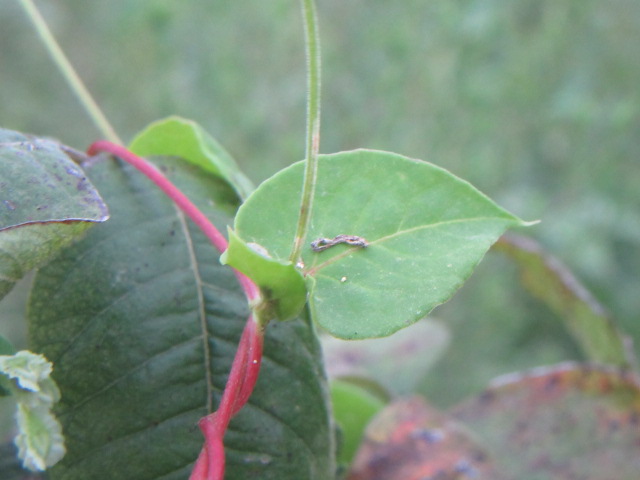
Fallopia scandens (Climbing False Buckwheat), 9-2-22, #908-12.
They have neat little leaves with twining stems that turn red in the sun. But what is it growing on? Hmmm…
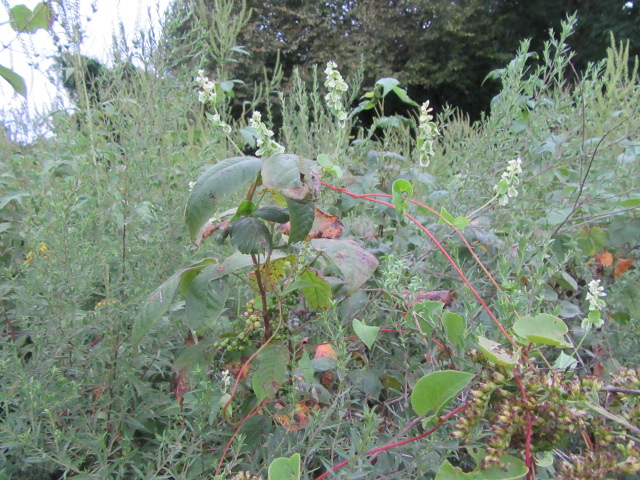
Hmmm…
And it has fruit…

Toxicodendron radicans (Poison Ivy), 9-2-22.
GEEZ! Poison Ivy!!!
Well, that’s it for this post and the Euphorbia post is getting close. Just waiting for the seeds to mature so I can confirm two of the species or one…
Until next time, be safe and stay positive. Always be thankful and GET DIRTY. The cooler temps are making it more pleasant to work outside.
Wow 47 new species in one year. Is that normal?
LikeLiked by 1 person
Hello Diane! It seems a little low for me. I think I have identified over 250 wildflowers, most from the farm. Total of 415 species including wildflowers, mosses, fungi, insects, butterflies, moths, etc. It’s great fun to find something new. I keep thinking I will run out, so I was surprised when the new wildflower count was 31. Unless you have a perfect weed-free lawn, you would be surprised how many species are in your yard. 🙂
LikeLike
Hi Lonnie – wow some interesting stuff. The hog peanut thing is amazing! 2 types of flowers & one underground- will there be any nuts though??
Also totally amazing that you show the hops as last week I found the exact same thing growing in the garden with the old man’s beard clematis- didn’t know what it was… can I make beer? 😂😉Take care & keep well
LikeLiked by 1 person
Hello Debbie! I must have forgotten to mention the fruit on the lower flowers produce a single seed, largr seed that burrows in the ground. That’s apparently what the pigs eat. They are edible to humans, too, are are supposed to be a peanut butter substitute. You can make beer with the hops. 🙂 Take care and thanks for the comment!
LikeLike
A couple of years ago I found a hops plant next to a local trail. They must be rather rare around here. I haven’t seen others since.
LikeLiked by 1 person
Hello Jim! I saw the vine several years ago, but it has spread on more of the fence. It’s a neat vine and hopefully, I can find flowers next summer. I haven’t seen it anywhere else. I hope you are yours are doing well. Take care and thanks for the comment!
LikeLiked by 1 person
Sorry it’s taken so long to get back to reading you. I saw the hops and thought, so what, hops are everywhere. Then we got onto American Hog peanuts and underground flowers and it was like being transported to a different world. You certainly see some great plants, and it’s always an education to visit.
LikeLiked by 1 person
Hello Simon! The only place I have ever seen hops around here is on this fence. As much as it has spread, you would think it wold be more common. It could be more prevalent in other areas. The Hog Peanut is definitely weird! I also get a good education most everytime I go out into the pasture. Take care and thanks for the comment!
LikeLiked by 1 person
🙂
LikeLiked by 1 person